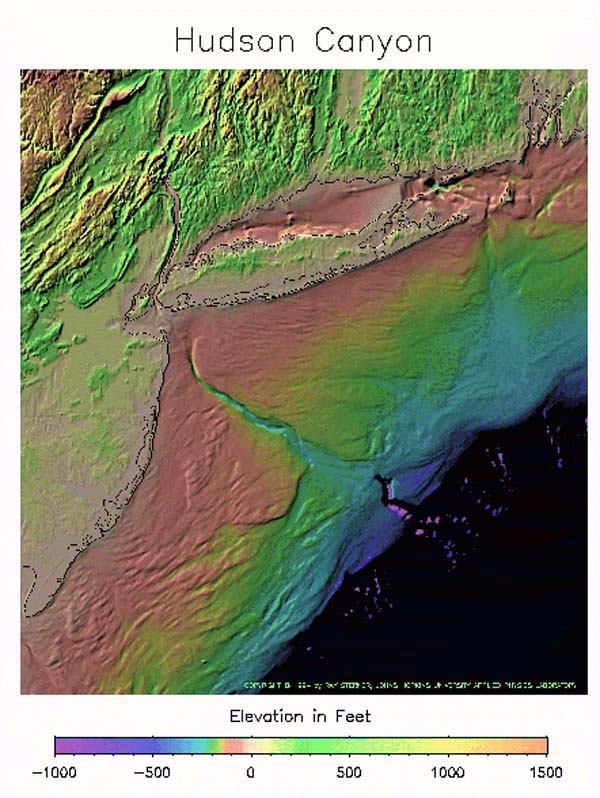June 8, 2022 — NOAA is seeking public comment on potentially designating a new national marine sanctuary in Hudson Canyon off the coast of New York and New Jersey. A sanctuary designation would help conserve the area’s rich marine wildlife and habitats, promote sustainable economic activities and create new opportunities for scientific research, ocean education and recreation.
Hudson Canyon is the largest underwater canyon along the U.S. Atlantic Coast, and is about 100 miles off the coast of New York and New Jersey. The canyon — about 2 to 2.5 miles deep and up to 7.5 miles wide — provides habitat for a range of protected and sensitive species, including sperm whales, sea turtles and deep sea corals. The canyon’s rich biodiversity is integral to the region’s economy, underpinning commercial and recreational fisheries, recreational diving, whale-watching and birding.
The National Marine Sanctuaries Act allows NOAA to designate and protect areas of the ocean and Great Lakes with special national significance. As directed by President Biden’s Executive Order on Tackling the Climate Crisis at Home and Abroad, NOAA and other federal agencies are pursuing a holistic approach to curbing greenhouse gas emissions and building resilience to climate change and its impacts, including by conserving and restoring ocean and coastal ecosystems. This action is consistent with that approach, including by seeking to expand the National Marine Sanctuary System as one recommendation of the Administration’s America the Beautiful initiative.
“A sanctuary near one of the most densely populated areas of the Northeast U.S. would connect diverse communities across the region to the ocean and the canyon in new and different ways. It would also help advance the Administration’s commitment to conserve and restore special marine places, leaving a lasting legacy for future generations,” said Rick Spinrad, Ph.D., NOAA Administrator. “As someone who grew up in New York City and went on to a career in ocean science, I am excited about how this amazing underwater environment can inspire shared interest in conserving our ocean.”
The Wildlife Conservation Society submitted a nomination for a Hudson Canyon National Marine Sanctuary in November 2016, noting that the area provides a wide range of benefits to New York and New Jersey residents such as clean air, fresh water, recreation and food.
Based on that successful nomination, NOAA is considering the potential designation of the Hudson Canyon area as a national marine sanctuary. We are seeking public comments on a range of management considerations, including options for the proposed sanctuary boundary, the potential name, information on the Indigenous and Tribal heritage of the area and other factors.
“The Mid-Atlantic region is already seeing shifts in marine species distributions, including some that are important to humans for food,” said Nicole LeBoeuf, director of NOAA’s National Ocean Service. “Hudson Canyon could serve as a sentinel site for NOAA to monitor the impacts of climate change on submarine canyons and other deep sea benthic habitats, which are vulnerable to the effects of ocean acidification and oxygen depletion.”
Read the full story from NOAA Fisheries

